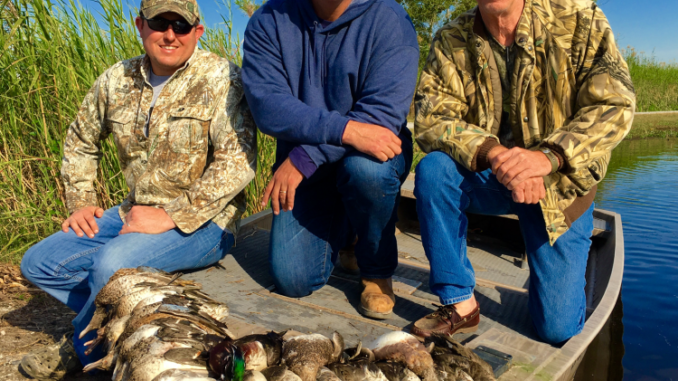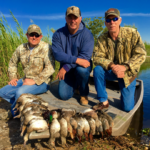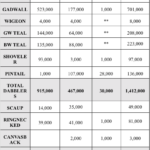
1.54 million birds is half of last November’s estimate, LDWF says
Duck hunters heading out to blinds for opening day of duck season in Louisiana’s west and coastal zones Saturday morning didn’t exactly get the news they were hoping for from the just-released November aerial survey conducted by the Louisiana Department of Wildlife and Fisheries.
Larry Reynolds, the state’s waterfowl study leader who completed flying aerial transects in the coastal zone and over Catahoula Lake earlier this week, estimated 1.54 million ducks in this year’s survey — about half of what was counted in 2016.
That figure is 23 percent below the most recent five-year long-term average of 2 million birds, with all species but blue-winged teal, shoveler and scaup below their long-term November averages.
“Distribution of ducks was skewed toward Southwest Louisiana, with 63 percent of ducks being counted in that region. Notable concentrations of mostly gadwalls were seen in the marsh south of West Cove of Calcasieu Lake, on the East Cove Unit of Cameron Prairie National Wildlife Refuge and on Rockefeller Refuge south of Highway 82,” Reynolds wrote in the report. “Interestingly, more ducks were counted in the brackish marsh and fewer in the agricultural habitats of Southwest Louisiana than expected. In Southeast Louisiana, the only concentration of ducks was in the marsh east of Venice, but solid numbers of birds were seen on lines through Delacroix and Biloxi Wildlife Management Area.
“Relatively few ducks, especially ring-necked ducks, were seen on the line through the upper Terrebonne marshes, a habitat that contributes substantially to the Southeast estimate in most years.”
Habitat conditions had improved from the extensive high water Reynolds saw in the September survey, but it remains below average.
“High water throughout the spring and summer led to poor production of seed-producing annual vegetation in most places in Southwest Louisiana, and although good sub-aquatic vegetation (SAV) production was noted in a number of locations, it was not as extensive as seen on past surveys. Some areas of fresh and intermediate marsh, such as south of White Lake continue to be impacted by invasive aquatics, mostly water hyacinth. Flooding in the agricultural region of Southwest Louisiana is at least average with most all managed impoundments flooded,” Reynolds wrote. “ Less pasture and shallow flooding was seen than in September, but conditions appear good in the agricultural habitats despite seeing few birds there on this survey. In Southeast Louisiana, SAV production also seems below average in most locations.
“Obvious damage from Hurricane Nate’s storm surge was noted at the mouth of the Mississippi River, but lower than average production was seen along most transects except in the brackish marsh south of Delacroix.”
On Catahoula Lake, numbers were very low.
“Flooding events in late-August after establishment of moist-soil vegetation and again in mid-September have generated poor habitat conditions,” Reynolds wrote. “So despite favorable water levels at the time of this survey, few ducks were seen compared to previous November surveys.”




